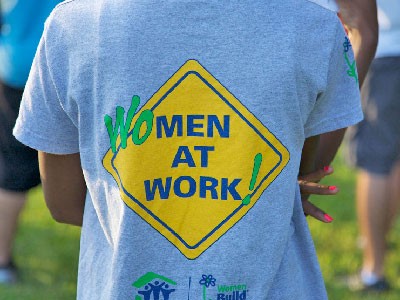President Obama commemorated Equal Pay Day by inking an executive order that addresses the wage gap between men and women, at least at federal contractors.
And while Equal Pay Day (the day a female worker catches up to a male worker’s total wages for the previous year) has come and gone, the issue remains along with a number of other developments regarding women in the workplace.
So, I’ve compiled a variety of resources and story ideas you might use now and over the next few weeks; the issue likely will be highlighted again in May when Mother’s Day typically shines new light on parenting/workplace matters.
On the equal pay front, the White House itself was dinged this week for what critics claim is its own wage-gender gap; critics say female workers at 1800 Pennsylvania Ave. are paid only 88 cents for every dollar that male workers earn. The awkward moment for the White House highlights what some analysts say are reasons for the gap that go beyond simple discrimination; when you mix in hours worked, the higher likelihood that women will take a career hiatus at some point and other factors, it’s a very fraught subject to report.
For example, this PolicyMic report uses the same 77-cents-to-one-dollar figure the White House uses to describe the female/male pay discrepancy, noting that can add up to a $400,000 deficit over a working woman’s lifetime. And as PolicyMic notes, citing the National Women’s Law Center fact sheet from November 2013, the gap is even worse for women in some demographic groups, especially Hispanic and Latina women.
The National Partnership for Women and Families also uses the 77-cent figure as a national base line and offers an interactive map of the state-by-state wage gaps; click on your state for more detailed info and analysis.
On the other hand, some analysts disagree with the oft-cited numbers and the conclusion that women are being unfairly paid. This Slate article, “The Gender Wage Gap Lie,” delves into factors like education, occupation and hours worked and says the gap is as narrow as 9 cents on the dollar (meaning women earn 91 percent of what men do.) The article cites this Freakonomics analysis of MBA-d workers, which says starting salaries are on par but maternity leave, part-time work and other choices eventually led to a 40-percent pay gap between men and women.
Obviously getting real-time wage-by-gender information from your area’s employers is going to be difficult but you might be able to obtain some stats from unions. Perhaps taking a look at the proxy statements now emerging from publicly traded companies would be interesting; at least you can compare the salaries and fringe benefits of female senior managers to their male counterparts, and ask about any discrepancies. Bloomberg last year analyzed proxies of the S&P 500 companies and found that female execs were earning 18 percent less than men. Why not do the same analysis for your local public companies and then ask them a) why and b) if the trend holds true among their rank-and-file workers.
A new report CBS News cited, by the office of Sen. Amy Klobuchar (D-Minn.) points out the long-term effects of the pay gap, including a fascinating state-by-state chart of women’s earnings and eventual Social Security benefits, which of course are pegged to wages. This is an interesting angle because a common reason women give for dropping out of the workforce to care for their children is the cost of day care which often is nearly the same as the family’s second income.
You might talk with financial advisors about the pros and cons of biting the bullet for a few years in order to stay invested in a career, even if it means treading water until the kids are in school. It may be that the eventual gains realized by staying employed outweigh the seeming futility of working in the pre-school years – not just in terms of closing the wage gap during working years, but for a woman’s old-age security. And this would be a very timely approach in light of the just-out Pew research which finds that the percentage of mothers who do not work outside the home was up to 29 percent in 2012, after decades of declining.
It might be interesting to see what your area’s major employers say about the Paycheck Fairness Act, a bill in the Senate that would change how discrimination suits are handled. Many critics say it would be more of a boon to plaintiffs’ lawyers than to actual workers and some trade groups like the National Retail Federation are publicly opposing it.
And here as context is the World Economic Federation’s 2013 Global Gender Gap Report.











